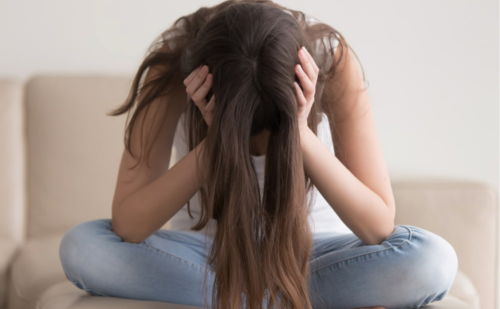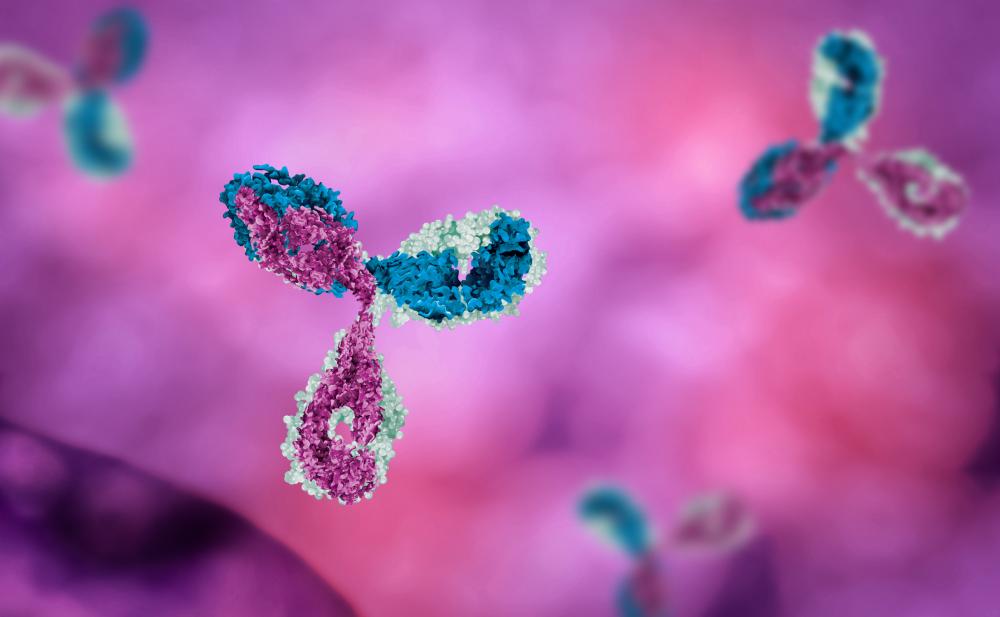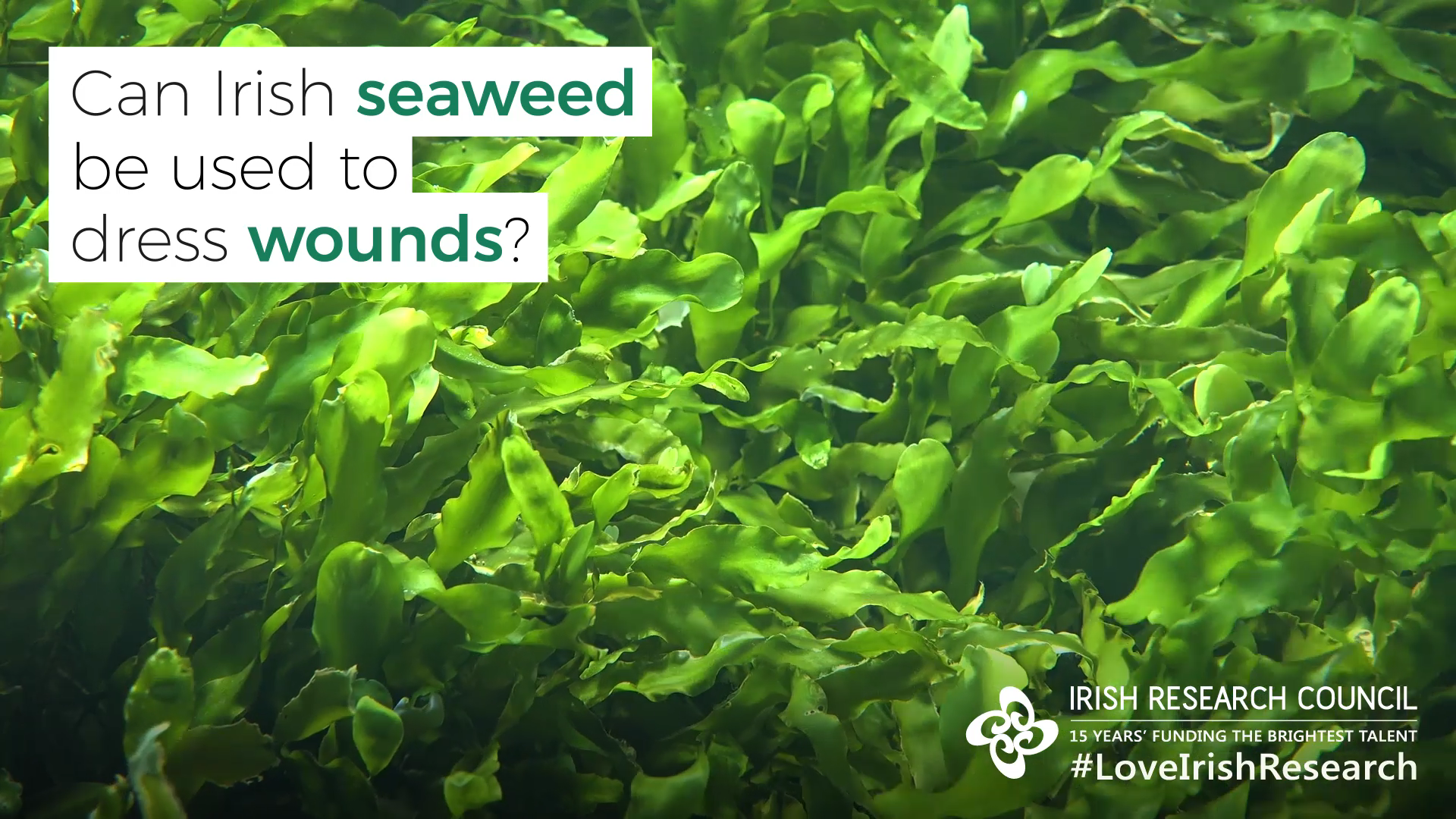
10 October, 2024
Posted: 13 November, 2017

To mark Science Week 2017, the Council are highlighting a selection of topical questions that its funded researchers are finding answers to by lighting up the well-known Dublin City Council Building on Dame Street with a series of light projections.
The light projections will be switched on from 5pm to midnight every day from Monday, 13 November to Friday, 17 November. Projected from the adjacent Dublin City Hall, the light show will be visible on the side of the Dublin City Council Building on Barnardo Square, Dame Street, Dublin 2.
Can the Internet of Things save our bees?
What would happen if the honeybee disappeared from the face of the earth? These insects do not just produce the honey we eat; they have the important job of pollination. It is safe to say that the disappearance of the honeybee would pose a global crisis for humanity. My research project used Internet of Things technology to remotely monitor the condition of beehives to inform the beekeeper of the colony’s status. This technology can provide concrete evidence of changes in the hive. If evidence of disease can be detected, beekeepers can intervene earlier and thus improve the yield of their hives by lowering bee mortality.
My project placed a series of wireless sensing devices within live beehives to collect information such as the temperature, humidity and weight of the hive. The data collected by the sensors was sent to the beekeeper, using a mobile phone (3G) radio, allowing them to view the conditions within the hive when they are unable to visit. The main objective of this work was to provide an effective tool for high accuracy beehive management. A beekeeper that is well-informed about the status of their hives can apply their time and resources in a more effective manner. In this way, the ‘smart hive’ can improve the productivity of beekeeping and help beekeepers prevent the death of their honeybees.
Fiona Edwards Murphy, Government of Ireland Postgraduate Scholarship (2014), University College Cork.
Do we have unrealistic expectations of mothers?
There are a number of reasons why women are turning away from motherhood, and culture plays a part in that process. Everywhere we go, we are surrounded by images of mothers, and these images affect the way we think and talk about motherhood. Television, film, popular literature and magazines set impossibly high standards for mothering. ‘Good’ mothers, they tell us, are willing to devote all of their time, energy and lives to raising their children – even if it means sacrificing their plans and their own dreams in the process.
My research on Germany, where the birth rate is very low, suggests that the cultural image of motherhood there is particularly problematic. The German idea of what it means to be a mother is linked to historical ideas about motherhood that emerged in the sixteenth century and gained particular currency during the National Socialist era. My research shows that contemporary images and narratives also reveal the inordinate pressure that women face when they make the decision to have children. The very high expectations placed on mothers in Germany is deterring many women from motherhood.
Dr Valerie Heffernan, Research Project Grant (2014), Maynooth University.

How can maths be used to predict storms?
The recent success in predicting the track of hurricane Ophelia demonstrates the accuracy of modern weather forecasts. The numerical models used by Met Eireann for their forecasts involve many areas of mathematics.
The atmosphere is a very complex system. A global network of land, sea, air and satellite observations are combined, using dynamical and statistical techniques, to give an initial state. This provides the starting point for solving the differential equations describing the changes in the atmosphere. The numerical models must perform billions of mathematical calculations to produce a forecast. Doing this accurately and efficiently requires powerful, high-performance computers. Research into the mathematics that make accurate weather forecasts possible is being done in universities and meteorological services in Ireland and across the world. Every small improvement can produce better forecasts, to the benefit of everyone.
Eoghan Harney, Government of Ireland Postgraduate Scholarship (2015), University College Dublin.
What is sexual consent?
Many people define consent as one-way communication – ‘giving consent’ or ‘getting consent’. We want people to see it as mutual, two-way communication. Researchers see sexual consent as “the freely given, verbal or non-verbal communication of a feeling of willingness to engage in sexual activity”. The different parts of this definition are normally reflected in what young adults say when we work with them in colleges. There is a shared social norm that consent means ‘saying it, showing it, and feeling it’.
Yet there is also a grey area associated with this definition – for instance: How much alcohol is too much before you cannot give consent; does a smile convey consent to sex; what kind of consent is required for kissing as opposed to intercourse?
Most young people do not feel well prepared by school-level sexual health education to negotiate these issues. That’s why we developed the SMART Consent workshop, which gets people talking about how they define consent, agreeing the key components, and grasping how complex real-life consent situations can be. The workshop also encourages participants to think about consent as an ongoing process, across all acts of intimacy.
Dr Pádraig MacNeela, Research for Policy and Society (2015), National University of Ireland, Galway.

Can Irish seaweed be used to dress wounds?
We’ve all heard the hype that seaweed is great for every ailment you’ve ever had and a superfood to boot, but are these claims enough to withstand scientific scrutiny? My research puts seaweed to the test by attempting to produce an antimicrobial wound dressing from seaweed extracts.
Wounds often get infected as the skin is the first line of defence against bacterial invasion. Unfortunately, antimicrobial resistant infections such as MRSA are making wounds harder to heal. By 2050 it is predicted that such infections will kill more people than cancer. Seaweeds have long been known to produce compounds that are biologically active. From anti-wrinkle to anti-cancer, there have been many studies indicating that seaweeds are the cat’s pyjamas for bioactive production. With the world’s antibiotics becoming redundant, scientists are looking for new sources of antibiotics. With all this in mind, the antimicrobial properties of seaweeds (more specifically, Irish seaweeds) are most definitely up to the task of dressing the world’s wounds.
Annabel Higgins Hoare, Government of Ireland Postgraduate Scholarship (2015), Waterford Institute of Technology.
Does the scale of the universe make human life meaningless?
Relative to the vastness of the universe we are tiny, and so we have little power over what happens to it. That’s a kind of insignificance. But power isn’t valuable for its own sake, it’s valuable for changing things that we care about… And most of the things that we care about are right here on Earth.
Dr Nicholas Hughes, Government of Ireland Postdoctoral Fellowship (2016), University College Dublin.

Can spider venom cure disease?
There are over 45,000 species of spiders living in the world and virtually all of them produce venom to defeat predators and prey. The venom of spiders is composed of hundreds of chemical compounds that have evolved over millions of years to fulfill one goal: disable and eventually, kill. These chemicals are very powerful and act in many ways: some target the nervous system by cutting the communication between the brain and the rest of the body while others can turn blood into jelly or eat away the skin of other animals.
Scientists estimate that all around the world, spiders produce in excess of 10 million different chemicals in their venom. Only 0.01% of these chemicals have been described so there is still a lot of work to be done! Venom compounds are so powerful that we can harvest them, tweak them in our labs and use them to cure disease. The venom of reptiles is already used to treat hypertension, stroke and diabetes. Soon, the venom of spiders (including Irish spiders) may be used to treat chronic pain and antibiotic-resistant infections.
Dr Michel Dugon, Government of Ireland Postdoctoral Fellowship (2015), National University of Ireland, Galway.
Why trust experts when they sometimes disagree?
Scientists always disagree about the details of their work and issues at the frontiers of research. Indeed, this is how science progresses – new ideas are rigorously tested as others try to poke holes in the arguments of their peers.
Paradoxically, this means that when scientists do reach a consensus it is the surest form of empirical knowledge that we can have. The fact that ideas and theories have been tested in the fire of peer criticism is one of the key factors making modern science so powerful. The ideas and theories that survive do so because nobody has been able to successfully find a major flaw in them, or observations and experiments that contradict them. Of course, this does not, and can never, guarantee that what scientists currently think is the absolute truth, but it does guarantee that it is the best available explanation and thus worthy of being trusted and used as the basis for policy.
Fundamentally, the fact that the structures of science promote disagreement and criticism is a guarantee of the trustworthiness of science. We should trust scientists precisely because they so often disagree!
Professor Luke Drury and Professor Maria Baghramian, New Horizons (2015), Dublin Institute of Advanced Studies and University College Dublin.

Can crying charge your phone?
In our research, we discovered that a protein found in tears produces an electric charge when it is squeezed. This property is called piezoelectricity and it has many useful applications. For example, piezoelectrics are used as the time-keeping element in your clock and as the igniter in your BBQ lighter.
Many people have been asking if we can use tears to power devices like our mobile phones. The simple answer is no, but the long answer is worth exploring. Firstly, sourcing enough tears to power our phones would be terribly difficult. Luckily, this protein is also found in egg whites, which is a more convenient supply source. Even with a ready supply of the protein, it is unlikely that we could use it to charge power-hungry devices like our mobile phones. Instead, we imagine that, in the future, this piezoelectric protein might power low-energy devices such as pacemakers. The protein could be very suitable in medical devices because it is naturally bio-compatible.
Dr Aimee Stapleton, Government of Ireland Postgraduate Scholarship (2012), University of Limerick.
How do crabs clean their sensors?
Crabs, like all living organisms, have sensors and the most relevant to their life are their eyes. In the marine environment many factors, both biological and inorganic, can influence the visual abilities of crabs, but they have developed natural solutions to keep their eyes efficient.
The green crab uses different strategies to keep their eyes in good condition:
Each single technique used by these crustaceans is not enough, however the combined use of all three proves highly efficient. These findings give indications for how to build sensors for monitoring purposes in the marine environment. One of the biggest problems with modern-day sensors is the deterioration of their sensing surface due to the aggressive marine environment. Crabs’ strategies can help in designing new high-tech solutions to this issue.
Dr Giuliano Greco, Government of Ireland Postgraduate Scholarship (2006), University College Cork.
Can crowdsourcing help us discover more about our Viking past?
Interest in the latest research on Ireland’s Viking past goes well beyond universities. Communities across Europe identify in very different ways with this shared past. To truly understand the impact that Norse and Vikings cultures continue to have in the modern world and various ways that the Viking past is perceived, academics need the help of the public to gather data and to make the wealth of resources available to the widest possible audience.
The World-Tree project set out to create a digital archive of material relating to the Vikings through community collection, and to turn this user-generated collection into an educational resource providing accessible information about the Viking past.
Individuals and organisations from across Europe submitted materials – ranging from photos of local Viking sites, to performances of Old Norse poetry and examples of Norse street names. These were then collated into interactive exhibits about different aspects of Norse culture and its modern reception. Involving the public at every stage allowed us to tailor research questions to the interests of different communities, and to produce an archive that helps the public access the latest research on the Vikings. It also provides important data helping us to map responses to the Vikings across Ireland and Europe as a whole and to discover more about the legacy of this period of settlement, discovery and conflict.
Dr Thomas Birkett, New Horizons (2015), University College Cork.
If you spot our light projections on Dame Street, tweet us your pictures @IrishResearch using #LoveIrishResearch.
Disclaimer: The opinions expressed in our guest blogs are the author’s own, and do not reflect the opinions of the Irish Research Council or any employee thereof.